The stretch of highway that connects Los Angeles and other more urbanized areas of California to the Mojave Desert is a fairly scenic, if not mundane ride. Driving on I-10 East on the way to Joshua Tree National Park, travelers will view some majestic scenery like mountains and desert landscapes, and a very distinct field of turbines. They’ll also encounter some standards of boring, nowhere America, like strip malls, rest stops, and several billboard advertisements for a lawyer named Sweet James. To most, it’s a pleasant but arduous drive from the city to the low desert.
But for others, this journey has almost religious significance, so much so that it’s often referred to as the desert rock pilgrimage. Stoner rock fans from all ends of the Earth have traversed the globe to California in order to recreate this drive to the desert to come to the Mecca of the genre: the Welcome to Sky Valley sign that resides at 76861 Dillon Rd in Desert Hot Springs.
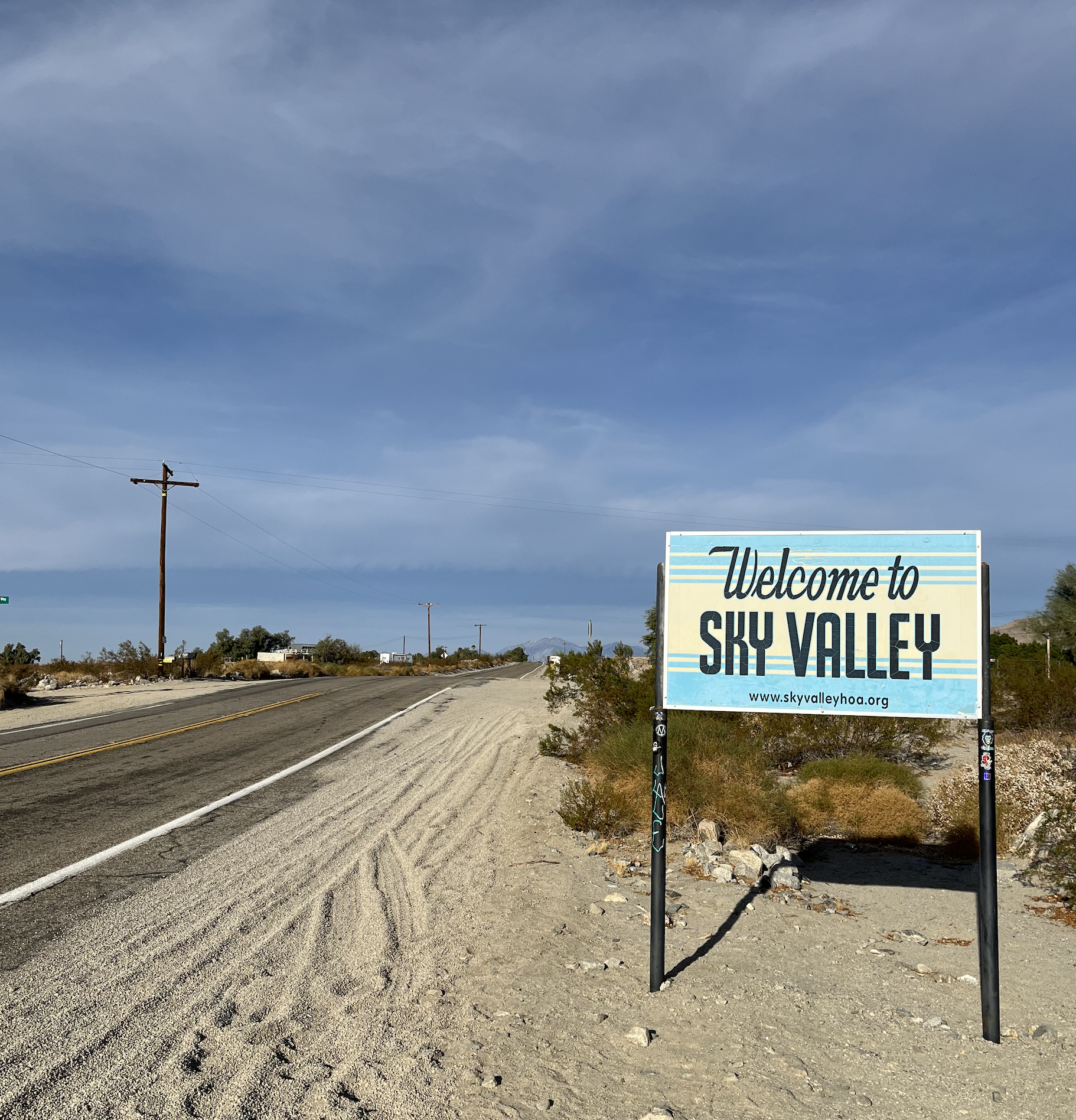
The reasons for the sanctity of the trek are two-fold. The first, and most obvious, is that this sign famously graces the cover of Kyuss’ third full-length record, 1994’s stoner rock genre-defining watermark Welcome to Sky Valley. The second, perhaps lesser known, reason for the journey, specifically from Los Angeles, is that the drive itself is the loose concept behind Queens of the Stone Age’s 2002 masterpiece Songs for the Deaf. The common denominator between these two groups and albums is the mastermind behind both of them is Joshua Homme, who lived in and around Palm Desert, California during his formative years and his time in both bands.
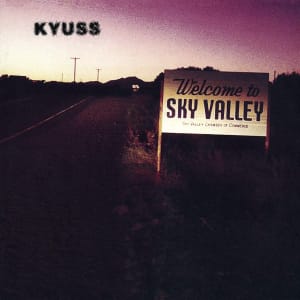
While Kyuss never enjoyed much commercial success in their time together, the group’s four albums are widely considered to be cornerstones of the stoner rock genre. The band came to prominence in the early 1990s, performing wherever they could in a mostly self-created music scene. Whether that meant performing at house parties, or in the desert through the use of generators, Kyuss garnered enough attention to eventually be signed by an independent label, Dali, before their rights were purchased by an Elektra subsidiary.
Led by Homme’s riffing and writing, alongside desert folk heroes John Garcia (vocals), Brant Bjork (drums), Scott Reeder and Nick Oliveri (bass), Kyuss defined the desert sound on classics like Blues for the Red Sun (1992) and the aforementioned Sky Valley (1994). Though Blues for the Red Sun is considered a classic in its own right, Sky Valley is the band’s seminal work, and stands as a tribute to the desert landscape that birthed the group. It contains many references to their home region where they honed their craft, both in the songs and the actual album artwork. Garcia said the idea for the album title and cover for Welcome to Sky Valley came from Bjork.
The way (Bjork) presented it to me, that title resonated something fierce. It was who we were and who we'd become. We're very proud of being from the desert. And it's a local spot we're familiar with, so it made perfect sense. - John Garcia
None of the band members ever resided in Sky Valley, but it was a familiar area where they hung out and performed at frequently. In fact, their last generator party took place just down the road from the Sky Valley sign in Indio Hills, and was Bjork’s last performance with the band on May 18, 1993.
“When I did my drum tracks, there was so much anger. I was pissed, because I knew it was the last thing I’d do with the band. I dropped my tracks, shaved my head, and went out and played our last show with me in the band out in the middle of the desert.” - Brant Bjork (Decibel)
The group ultimately disbanded after 1995’s …and the Circus Leaves Town due to creative differences, mostly sparked by the departure of Bjork after Sky Valley’s recording sessions. Bjork would go on to drum for Fu Manchu, while Homme enjoyed a short stint as a touring guitarist for Seattle’s Screaming Trees, during which time he developed a strong relationship with frontman Mark Lanegan. Homme would eventually form Queens of the Stone Age shortly after, recruiting former Kyuss bassist Oliveri as well as Lanegan to contribute to his new group. After modest success with their first two releases, 1998’s eponymous debut and 2000’s Rated R, Queens broke through to the mainstream with 2002’s Songs for the Deaf, which notably features Dave Grohl on drums.
Though not an out and out concept record, the interludes on Songs for the Deaf conjure scanning the radio dial while driving from Los Angeles to Joshua Tree. Beginning with the sound of an ignition starting during “Millionaire,” the humorous, well-written snippets and interspersed between the songs, with various town names from the ride being referenced by each fictional DJ hitting the post on the next track. The album also contains references to the desert, specifically the lead single “No One Knows” (‘I journey through the desert’) and the concluding, final track “Mosquito Song” (‘I know, I know the sun is hot… mosquitos come suck your blood’), which perhaps signifies the end of the trek to Joshua Tree.
For these reasons, Kyuss and Queens of the Stone Age fans from all around the world seek out this stretch of land in southern California for the purposes of making their own desert rock pilgrimage. In fact, there’s a group called Kyuss World that hosts a meetup at the sign each year, usually accompanied by a concert, to commemorate the band’s legacy and celebrate the genre. Armed with this knowledge, I must have made a subconscious promise to myself that if I was ever close enough to the area, I’d make my own journey for these two bands who have meant so much to me over the years.
As fate would have it, I was out in California a week ago for my younger brother’s wedding. Knowing this was about as close as I would get for some time, I had scouted out how far the drive would be to Sky Valley prior to flying in. Not being very well versed in the geography of Southern California, I figured between my obligations for the wedding and the distance to travel, I wouldn’t be able to swing it from San Diego along Hwy 74, another route memorialized in Kyuss lore as the opening track to 1991’s Wretch bears its name. Lo and behold, the hotel I booked was about an hour north in Vista, which suddenly put the pilgrimage in play. (Note: I suppose my research wasn’t that diligent).

Knowing now that the journey would only be a couple of hours, I decided that this would be my best and perhaps only opportunity to complete this musical rite of passage. One minor problem: I did not rent a car, again suggesting perhaps my planning was subpar. After a quick Uber ride with a man touting his new social media app and the virtues of moving to the Philippines, I locked in a reasonable rate at the Budget in Vista, even though the guy running the store lectured me on conspiracy theories for the duration of the transaction. I guess that's California for you.
Actually prepared now to make the pilgrimage, I had to calculate the perfect window to make the drive, taking both California traffic and my familial obligations into consideration. The only option that made sense was a 6:30am ride on the day of my brother’s wedding. That would leave me enough time to get there, snap a few pictures to document my experience, and make it back with time to rest before the festivities began at 2pm. I was in.
Songs for the Deaf while on I-10.
Of course, there were two key things I needed to bring with me on the ride – Songs for the Deaf and Welcome to Sky Valley. I was able to cue up the former as I was leaving Vista and traversing the winding mountain highways into the more rural landscapes, and I cued up the former as I was driving through the Coachella Valley on my final approach to the sign. Thank you, Spotify.
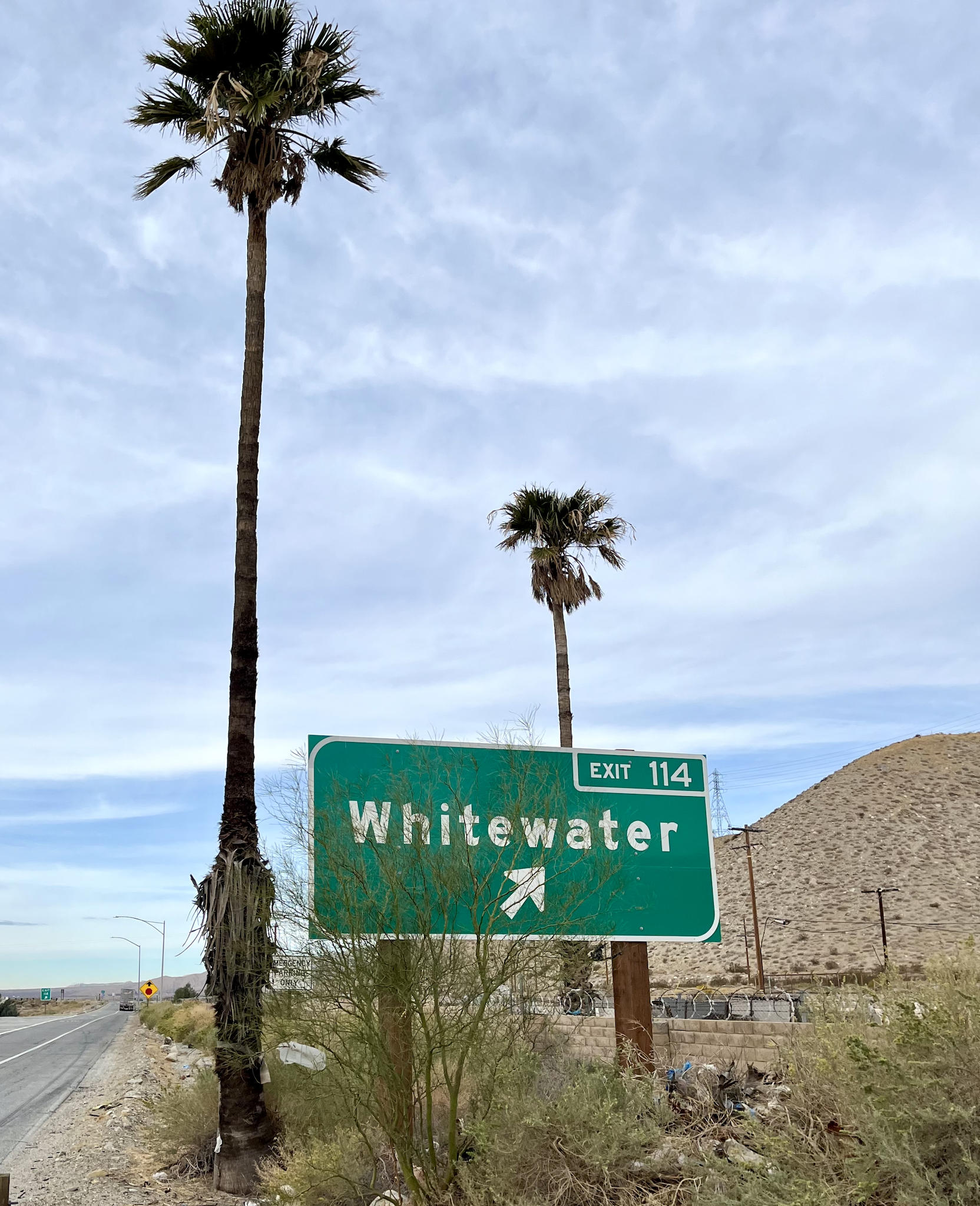
Along the way, the landmarks associated with both albums and the desert rock scene itself were abundant: highway exit signs for Whitewater (the epic closing track to Sky Valley, Vista Chino (a band formed by the former members of Kyuss other than Homme), Banning and Chino Hills (referenced by DJs on Songs for the Deaf), and Palm Desert (Homme’s hometown). But the most significant and noticeable attraction was the San Gorgonio Pass Wind Farm, which currently consists of 666 turbines. Very metal.

Though stunning for the pure oddity of their placement against such a beautiful mountain and desert backdrop, the turbines are significant for a reason related to the pilgrimage I was making: they are prominently featured in the insert and on the back cover of Welcome to Sky Valley, adding another layer of holiness to the trek.
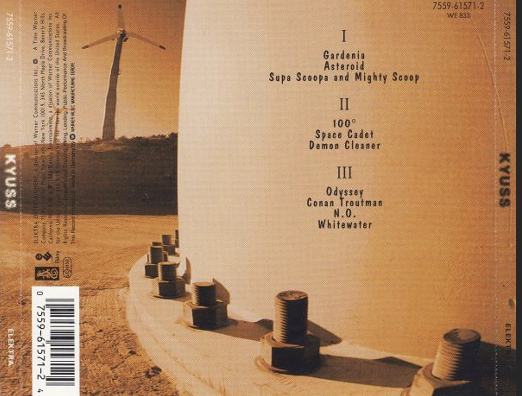
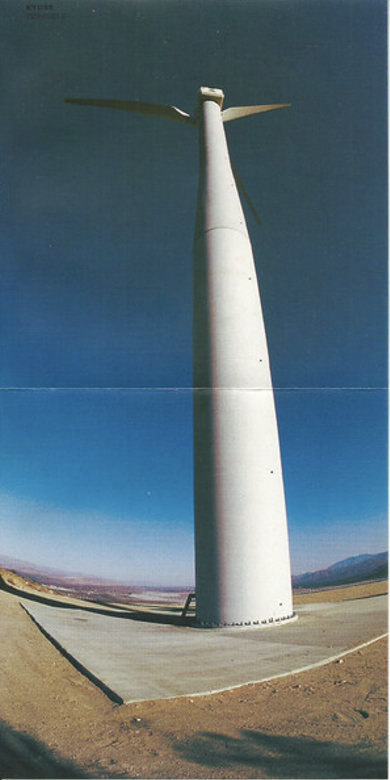
As I was closing in on my destination, I had timed my playing of Sky Valley perfectly, as the last track, “Whitewater” started playing as I made a left on Dillon Road. The scarce lyrics on the mostly instrumental track, which read like a love letter to Kyuss’ home region upon returning there, summarized my trip perfectly:
Oh sunshine,
The loving beauty,
Pass me by,
Should I waste my time
In your valley,
Beneath your sky?
Aah, I am home
You move your own mountain,
The trees have grown,
The trees have grown,
Now it's over,
Now it's over and I'm coming home
Welcome to Sky Valley for the approach.
After a driving a mile down the road, I finally came upon the legendary sign where so many had traveled before me: fans of the band, members of the desert rock scene, and the band members of Kyuss themselves. I was in the vicinity where the legendary generator parties had been played, where the band cut their teeth and gained their cult following that continues to this day. It’s silly to say, but standing next to that sign, which has been replaced and reinforced over the years due to attempted thefts, felt very close to musical hallowed ground.


The significance of the sign, I suppose, is that it stands as a physical representation of a moment in music history. There are very few people that can say they ever saw Kyuss play at a generator party in the desert, but making the pilgrimage to see the Welcome to Sky Valley sign while listening to those records can give you some insight into how and why these albums and records came to be. It’s not the same as being there when it happened – if you weren’t, you will never be. But for fans like me, its just about as close as you can come to experiencing this music the way it was supposed to be listened to (without distraction) some thirty years after its release.
If you don’t believe me, then take it from the guy who wrote it:
The funny thing is, I’ve met a lot of people that have said, "I took a pilgrimage to the desert and listened to those records there." But I gotta say, I didn’t listen to any of those records for years and years, actually. But some of the only cassettes I have are Kyuss, and I was driving home from somewhere after Kyuss had broken up and put in Circus and Sky Valley and Blues and as I started to get to the desert, it totally made sense. Everything worked right – it was the phase opposite of its environment – it filled in all the gaps. It made sense to me there. Before that, I’d just assumed it worked. But I got to step back and say, "Yeah, it works. It sounds like that place looks." – Josh Homme (Decibel)
As an epilogue to this story, while researching this article, I looked up the release date for Welcome to Sky Valley. Despite being recorded in 1993, it wasn’t released until June 28, 1994 – which is my brother’s birthday. And I went to visit the sign on the morning of his wedding day. The universe, man.


